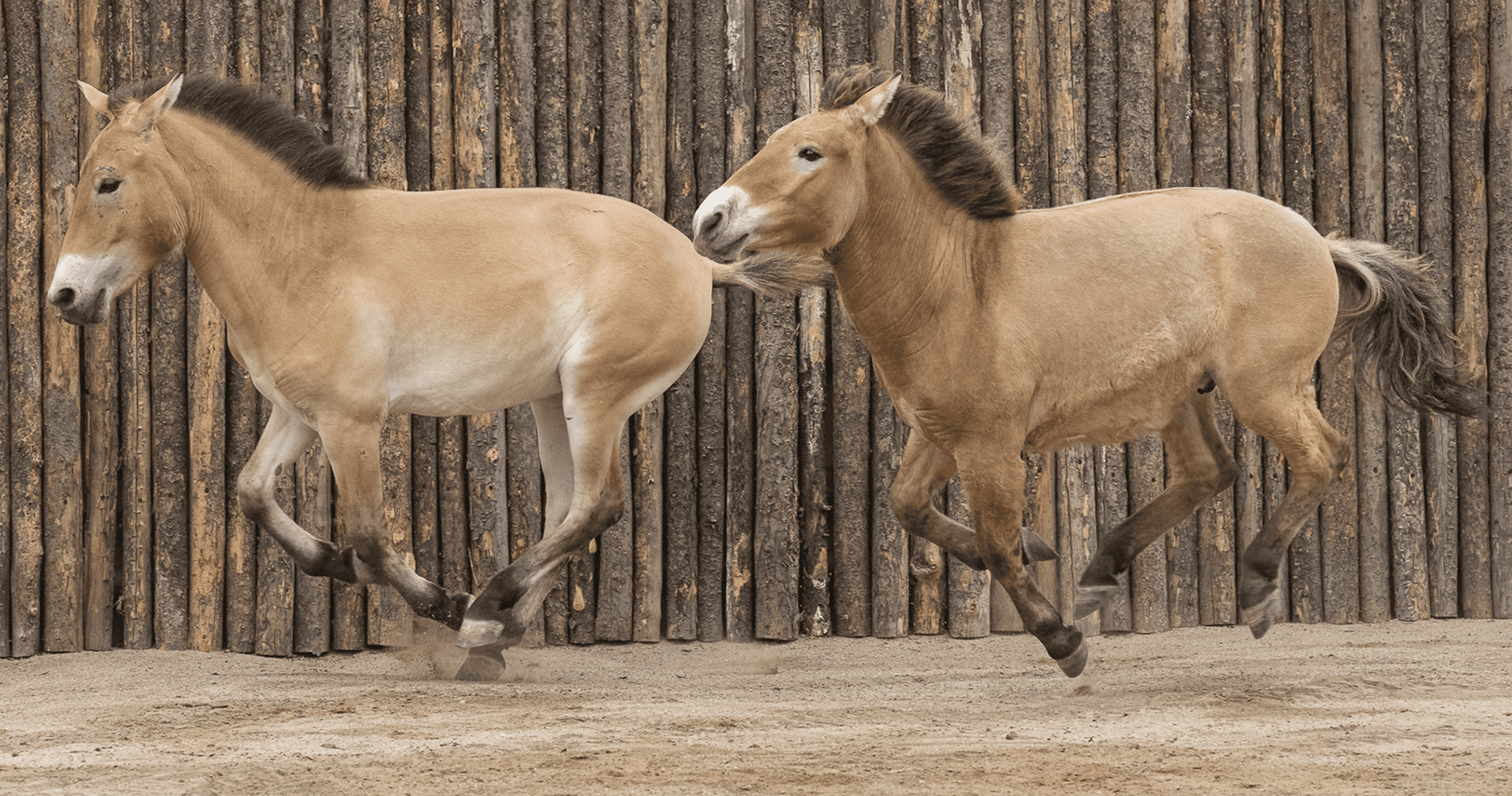
Holly, on the left, a Przewalski’s horse filly, meeting Kurt for the first time in May 2021. Photo Credit: San Diego Zoo Wildlife Alliance
Kurt—the world’s first successfully cloned Przewalski’s horse—is thriving at his home at the San Diego Zoo Safari Park and learning the language of being a wild horse from Holly, a young female of his own species.
Kurt and Holly’s pairing is a step in a long process to bring back lost genetic diversity to this endangered species. Kurt is a clone of a male Przewalski’s stallion whose DNA was cryopreserved 42 years ago. He was born on August 6, 2020, thanks to a dedicated partnership between Revive & Restore, San Diego Zoo Wildlife Alliance, and ViaGen Pets and Equine.
Kurt’s birth was only the first step in bringing his important genetics back to the Przewalski’s population. He was born to a surrogate mother, a domestic quarter horse, which means he had not had experience with other Przewalski’s horses. San Diego Zoo Safari Park wildlife care experts embarked on an effort to ensure the young male gained the behavioral language he will need to interact and thrive among his own species.
”Because Kurt was not born into a herd, he didn’t know the behavioral language that is unique to Przewalski’s horses. Our first step to socialize him was introducing him to Holly.
Kristi Burtis, DMDirector of wildlife care, San Diego Zoo Safari Park
Holly arrived at the San Diego Zoo Safari Park in May 2021. Just a few months older than Kurt, Holly was raised in a Przewalski’s horse herd and had the full repertoire of wild horse language to share. Wildlife care specialists at the Safari Park introduced the two, hoping that Holly could serve as a mentor and teacher to Kurt. After some behavioral sparring, the two have settled into an affectionate pairing. They enjoy being together, running around and playing.
Kurt and Holly have been in a secluded, private habitat since their arrival at the Safari Park and were recently introduced to the Safari Park’s Central Asia field habitat, where they are now viewable by guests. This move will further prepare them to soon join the larger herd of Przewalski’s horses, and the plan is for Kurt to be the breeder stallion when he reaches maturity at 3 to 4 years of age.
”Our goal to clone a Przewalski’s horse was to see future generations of this species benefit. This relationship between Kurt and Holly is an important part of Kurt’s maturation, and bodes well for the genetic rescue of other endangered species around the world.
Ryan PhelanCo-founder and Executive Director, Revive & Restore
About the Project
Przewalski’s horses are a critically endangered species found in the steppes of Mongolia. Formerly extinct in the wild, today’s Przewalski’s horses are all descendants of just 12 individuals. Since 2018, Revive & Restore has been working to restore genetic diversity in the Przewalski’s horse, including helping create the world’s first successfully cloned Przewalski’s horse, Kurt.
Kurt highlights our work to restore genetic diversity in bottlenecked species around the world. The Mongolian name for the Przewalski’s horse is takhi, which means “spirit” or “worthy of worship.”



